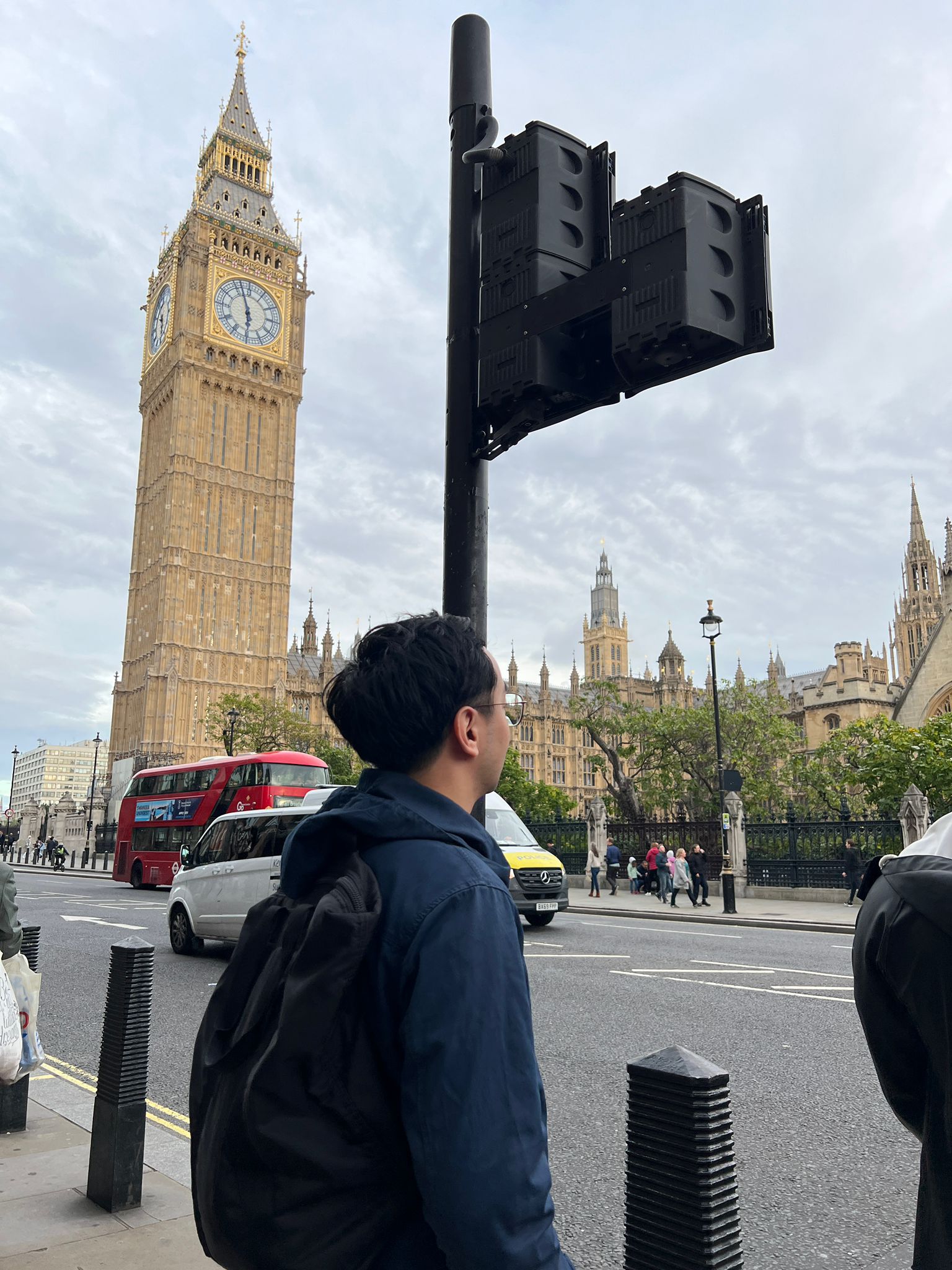Hello, and welcome to "Continuous Improvement," the podcast where we explore ways to enhance various aspects of our lives. I'm your host, Victor, and today we're going on a virtual journey to one of the most vibrant cities in the world – London!
[Background sounds of city hustle and bustle]
Last week, I had the pleasure of visiting London for a business trip. This city effortlessly brings together the old and the new, creating a unique charm that captivates both locals and visitors alike. Today, I want to share with you a snapshot of what London has to offer, from its iconic landmarks to its diverse cultural experiences.
Let's start with London's landmarks. One cannot visit this city without exploring the historic Tower of London – a fortress, royal palace, and even a former prison. Be sure to check out the Crown Jewels while you're there. And speaking of royal history, Westminster Abbey is a must-see. It has witnessed countless coronations and royal weddings throughout the centuries.
[Background sounds of tourists]
Just across from Westminster Abbey, you'll find the famous Houses of Parliament and the renowned Big Ben. The view from the South Bank or Westminster Bridge, especially at sunset, is simply breathtaking.
Now, let's dive into London's world-class museums. The British Museum houses some of the most prestigious collections in the world, including the iconic Rosetta Stone and the fascinating Egyptian mummies. If contemporary art is more your style, head over to the Tate Modern – a former power station transformed into a haven for art enthusiasts.
[Background sounds of museum exhibits]
Families will love the Natural History Museum, with its dinosaur skeletons and the magnificent blue whale. The best part is that many of these museums offer free admission, allowing everyone to enjoy these cultural treasures.
London is also a city to explore by wandering its streets and parks. Covent Garden, once a bustling market, is now a vibrant hub of shops, restaurants, and talented street performers. For a more alternative experience, visit Camden Market, known for its alternative fashion, tasty food stalls, and lively energy.
[Background sounds of street performers and market chatter]
And when you need a break from the urban landscape, Hyde Park offers a serene escape. Rent a paddleboat or simply take a leisurely stroll while enjoying the lively debates at Speaker's Corner.
Now, let's talk about experiencing London's iconic river, the Thames. The London Eye, a modern marvel, offers a panoramic view of the entire city. If you prefer a more immersive experience, hop on one of the Thames River Cruises. As you float along the river, you'll pass by many of London's famous landmarks, creating a unique perspective of the city.
[Background sounds of boat on water]
And if you're feeling adventurous, head over to Greenwich. Explore the rich maritime history at the National Maritime Museum, stand on the Prime Meridian, and visit the Royal Observatory.
Now that we've covered the sights, let's savor the flavors of London. From traditional English breakfasts to fish and chips, London's gastronomy scene is diverse and vibrant. And of course, no visit to London would be complete without indulging in a quintessential afternoon tea. So, be sure to treat yourself to this delightful experience.
[Background sounds of restaurant chatter]
While the daytime in London offers endless exploration opportunities, the city truly comes alive at night. The West End is renowned for its world-class theater performances and musicals. For classical music enthusiasts, the Royal Opera House and the Royal Albert Hall are the go-to venues.
[Background sounds of theater applause]
And if you're up for a night out, London's nightlife has something for everyone. From historic pubs like The George or Ye Olde Cheshire Cheese to trendy nightclubs in Soho, the city's eclectic nightlife is always buzzing.
Before we conclude our journey, here are a few travel tips to ensure you have a seamless experience in London. Firstly, consider getting an Oyster Card – a smart card that makes navigating the city's public transportation system much more convenient and affordable. And if you prefer, you can also use your Visa or Mastercard.
Secondly, consider taking walking tours to discover the city's history and hidden gems. It's a fantastic way to get to know London on a more intimate level. Oh, and don't forget about the weather – London's climate can be unpredictable, so always have an umbrella at hand and a jacket for those chilly winter days.
[Background sounds of rain]
In conclusion, London is a city that caters to every kind of traveler. Whether you're a history buff, an art aficionado, a foodie, or someone looking for a vibrant city's energy, London welcomes you with open arms. So, put on your walking shoes, tap your Oyster Card, and dive into the magic that is London!
That's all for today's episode of "Continuous Improvement." I hope you enjoyed our virtual journey to London and found some inspiration for your own adventures. Remember, it's all about embracing new experiences and continuously improving ourselves. Until next time, safe travels and take care!














